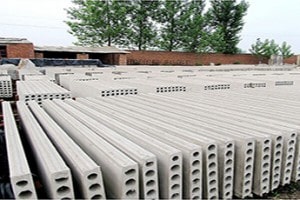Article -> Article Details
| Title | Why AAC Block Manufacturing Machines Are Key to Sustainable Construction | Intra Group |
|---|---|
| Category | Business --> Industry |
| Meta Keywords | AAC block manufacturing machine |
| Owner | Intra Group |
| Description | |
| In today’s fast-evolving construction industry, sustainability has become more than just a trend—it’s a necessity. Builders and developers are increasingly turning toward eco-friendly materials and technologies to minimize their environmental impact. One of the most significant innovations in this space is the AAC block manufacturing machine, which has revolutionized the way building materials are produced. These machines are not only efficient but also contribute to the global push for sustainable construction through energy efficiency, waste reduction, and environmental protection. Understanding AAC and Its Importance AAC, or Autoclaved Aerated Concrete, is a lightweight, precast foam concrete material known for its superior insulation properties and strength. It’s produced by combining natural raw materials like fly ash, lime, cement, water, and aluminum powder. The unique manufacturing process of AAC blocks ensures minimal waste generation and maximum energy efficiency, making it a preferred choice in green building initiatives. The rise in demand for AAC blocks has led to the rapid development of advanced machinery designed to produce them on a large scale. These AAC block manufacturing machines have transformed the traditional brick-making process by offering a cleaner, faster, and more sustainable alternative. Eco-Friendly Advantages of AAC Block Manufacturing Sustainability in construction starts with the materials used. AAC blocks stand out because of their eco-friendly characteristics. Here’s how AAC technology promotes a greener future:
How AAC Block Manufacturing Machines Support Green Building Goals The heart of sustainability in AAC block production lies in the AAC block manufacturing machine. These machines integrate automation, precision, and efficiency to create high-quality blocks with minimal environmental impact. Modern AAC block machines are designed to:
In the middle of this growing demand for sustainable infrastructure, it’s clear that an AAC block manufacturing machine plays a vital role in achieving both environmental and economic goals for modern construction businesses. Economic and Environmental Benefits for Manufacturers Beyond environmental advantages, AAC block machinery also provides substantial business benefits for manufacturers and entrepreneurs.
AAC Technology and the Future of Sustainable Infrastructure As urbanization accelerates, the need for environmentally responsible construction solutions will only intensify. AAC blocks, supported by advanced manufacturing technology, are expected to dominate the future of green architecture. The combination of reduced energy use, recyclable materials, and minimal carbon emissions makes them a cornerstone of sustainable infrastructure development. In regions where construction contributes significantly to pollution, adopting AAC block technology is an essential step toward carbon neutrality. Conclusion The construction world is shifting toward innovation and sustainability, and AAC block manufacturing machines are at the forefront of this transformation. By enabling energy-efficient production, minimizing waste, and supporting eco-friendly construction practices, these machines are paving the way for a greener and smarter future. For manufacturers and builders aiming to balance profitability with environmental responsibility, investing in AAC block technology is not just a wise decision—it’s a sustainable one. Other Recommendations: Plant & Machinery To Produce Fiber Cement Board | |

